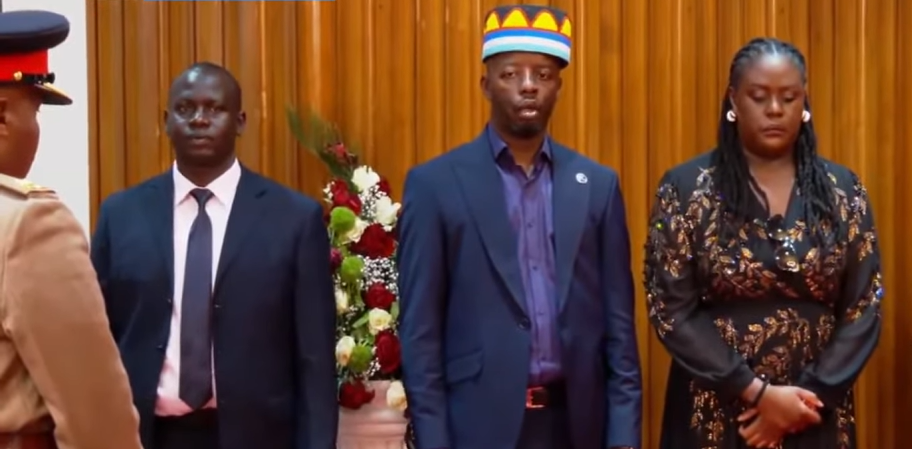The public prayer service for the late ODM leader Raila Amolo Odinga at Nyayo Stadium on Friday drew thousands of mourners from across Kenya. The atmosphere was both solemn and deeply emotional, as citizens gathered to pay their final respects to one of the country’s most enduring political icons.
Amid the sea of mourners, one figure stood out — Raila Odinga Junior, the youngest son of the late leader. His presence carried both emotional weight and symbolic power. Before delivering his tribute, Junior calmed the restless audience with a phrase that instantly echoed his father’s familiar voice and commanding presence.
“Aaayah! Aaayah! Sawa. Haya haya tulia wacha nisome ah,” he said — and the crowd immediately fell silent.
The moment was electric. It transported the audience back to countless rallies and public addresses where Raila Odinga’s words stirred unity, courage, and conviction.
A Nation United in Mourning
The service followed a grand procession from Parliament, where Raila’s body had earlier lain in state. But it was Junior’s tribute — and what he chose to wear — that captured the nation’s attention.
During the ceremony, he held his father’s iconic fly whisk and wore his grandfather Jaramogi Oginga Odinga’s signature hat. The imagery was striking and steeped in meaning — a symbolic bridge between three generations of a family that has profoundly shaped Kenya’s political story.
The fly whisk, known as orengo in Luo culture, was one of Raila Odinga’s defining symbols — a mark of authority, identity, and connection to tradition. It embodied his stature as both a statesman and a people’s leader. The hat, reminiscent of Jaramogi’s signature style, evoked the spirit of Kenya’s independence era, reminding Kenyans of the Odinga family’s long-standing role in the country’s journey toward democracy and justice.
A Legacy in Transition
By bearing these two powerful symbols, Raila Junior appeared to embody the Odinga legacy — a lineage of leadership, courage, and service. His gesture at Nyayo Stadium was not just a personal tribute; it resonated as a visual succession, a sign that the family’s political and cultural heritage continues.
Although Junior has largely stayed out of active politics, focusing on entrepreneurship and philanthropy, his recent public appearances have hinted at a possible new chapter. His calm authority, choice of words, and symbolic gestures have led many to wonder if the Odinga family is preparing for a generational transition.
As Kenya mourns the passing of Raila Amolo Odinga, the man who defined political discourse for over four decades, his son’s actions at Nyayo Stadium served as a poignant reminder: while one era ends, another begins.
In his father’s fly whisk and his grandfather’s hat, Raila Odinga Junior carried more than symbols — he carried the weight of legacy, the hope of continuity, and the promise that the Odinga flame will keep burning.

